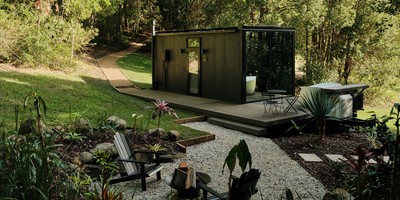How to Prepare Your Home Before Your Next Trip
Australia 21 October 2025
Traveling brings excitement and relaxation, yet leaving a home unattended often causes worry. Natural disasters strike without warning. Storms, floods, bushfires are all capable of causing significant damage. Over time, our experience has taught that thorough preparation before departing minimizes risks and protects what matters most. This guide offers clear, practical steps to secure a home before setting off, helping travelers enjoy peace of mind while away.
Know Your Risks and Local Hazards
Understanding environmental threats facing a property forms the foundation of any preparation plan. Risks vary widely by location: coastal regions might face cyclones and flooding, while bushland proximity increases wildfire danger. Consult official resources like local government hazard maps or meteorological services to identify potential threats around the house.
Recognizing seasonal patterns also proves valuable. In certain areas, storm seasons may bring heavy rainfall and wind, whereas other places face dry, fire-prone months. Keeping informed about these factors helps shape effective safety measures.
Researching local risks before a lengthy trip can seriously help keep your home safe. This link can help you learn more.
Communication and Emergency Planning
Leaving a home unoccupied requires more than just locking doors. Establishing a communication plan keeps trusted individuals informed and ready to act if needed. Sharing travel details with neighbors or close friends ensures someone watches over the property and can respond quickly to emergencies.
Creating an emergency contact list proves invaluable. Including phone numbers for insurance agents, local emergency services, and trusted neighbors means help remains accessible without scrambling for details. Setting check-in routines with those entrusted helps monitor any developing issues.
Developing an evacuation or response plan, even while away, prepares everyone involved for potential urgency. Considering different scenarios and designating meeting points strengthens overall safety.
Our own trips highlighted the benefit of open communication channels with neighbors. In one instance, timely updates from them alerted us about a nearby storm causing minor roof damage, allowing swift action upon return.
Structural and Maintenance Checks Before Leaving
Thorough inspection and maintenance dramatically reduce the chances of weather or disaster-related harm. Dividing tasks into roof, interior, and exterior checks can help you prepare your home much more smoothly.
Roof and Gutters
Storms often exploit weaknesses in roofing. Ensuring tiles or shingles remain secure prevents leaks and structural damage. Clearing gutters and downpipes of debris allows rainwater to flow freely, reducing flooding risk around foundations. Proper drainage systems direct water away from the home, preserving integrity.
Inside Your Home
Checking smoke alarms guarantees they function when needed. Testing circuit breakers and surge protectors prevents electrical mishaps during storms or power fluctuations. Unplugging appliances reduces fire hazards and conserves energy.
Outside Your Home
Trimming trees and removing dead branches avoids dangerous falling limbs during high winds. Storing loose outdoor furniture, tools, or decorations inside or securely fastening them prevents damage or injury caused by flying objects. Clearing dry leaves or combustible material from yards helps reduce bushfire risk.
These maintenance steps have repeatedly saved us from damage after heavy rains and strong winds. Taking time before departure pays dividends when unexpected weather strikes.
Security and Absence Measures
Securing a home against theft or vandalism ranks just as important as weatherproofing. Locking every door and window, including less obvious entrances like sliding doors or basement accesses, denies easy entry. Activating or installing alarm systems adds a deterrent and immediate alert capability.
Using timers on lights simulates occupancy, discouraging burglars. Smart home devices increase this effect with more advanced scheduling and remote control. Informing trusted neighbors about travel dates invites additional vigilance.
Mail and package deliveries often pile up, signaling absence. Pausing services or arranging collections prevents unwanted attention.
Avoid sharing trip details on public social media accounts. Instead, rely on direct communication with close contacts for security reasons.
Adopting these security habits has made departures less worrisome for us. Knowing the house appears lived-in reduces vulnerability during long absences.
Documents, Insurance, and Valuables
Proper documentation and insurance coverage form the backbone of disaster recovery. Reviewing policies to confirm coverage includes natural disasters common to the area ensures financial protection. This encompasses both structural damage and personal belongings.
Understanding policy details,such as flood, fire, or theft coverage, avoids unpleasant surprises when filing claims. Keeping physical documents like property deeds, insurance papers, and identification in waterproof, fire-resistant safes adds extra security. Backing up digital copies on cloud storage provides accessible backups.
Valuables benefit from discreet storage, such as locked safes or hidden compartments, preventing theft and damage.
From experience, updating insurance before traveling avoided stressful situations after minor storm damage. Knowing everything remains protected provides confidence during absence.
Prepare Your Emergency Kit
Even when away, having an emergency kit ready is vital. Neighbors or caretakers may need it during unforeseen events. Essential items include bottled water, torchlights, portable radios, first aid supplies, and spare batteries.
Medications and pet care products also deserve inclusion. Printed emergency contact lists ensure assistance reaches the right people quickly.
Storing the kit in a designated, easy-to-find location enables immediate access. Communicating this location to trusted helpers prepares them for swift response.
Our emergency kit has come in handy during unexpected power outages at home. Preparing it ahead of time simplifies crisis handling.
Final Pre-Departure Checklist
Before leaving, running through a final checklist consolidates all preparation steps. Key points include:
- Lock all windows and doors securely
- Activate alarm and security systems
- Turn off or unplug appliances not in use
- Take out garbage and pause mail delivery
- Ensure emergency kit is accessible
- Notify neighbors or caretakers about trip details
- Shut off water or gas mains if applicable
This list serves as a last-minute reminder, preventing overlooked tasks that could cause complications.
While You’re Away: Remote Monitoring and Check-Ins
Modern technology offers powerful tools for remote home management. Cameras, motion sensors, and smart thermostats allow monitoring from anywhere. Setting alerts for unusual activity provides timely warnings.
Signing up for weather and emergency alerts keeps us informed about approaching threats. Regular check-ins with neighbors or caretakers confirm the house remains secure and sound.
With these strategies, you can enjoy a trip to the best walking trails in Sydney or cross off your animal encounters bucket list with more peace of mind.
Upon Return: Post-Trip Inspection and Recovery
Returning home requires a thorough inspection. Examine roofs, gutters, trees, and external structures for storm damage. Walk through each room checking for leaks, unusual odors, or pest intrusion.
Test smoke alarms, electrical systems, and security devices to confirm proper functioning. Document any damage with photos for insurance claims.
Early detection of issues helps avoid costly repairs and expedites restoration. Our own return routines included systematic checks, helping catch minor roof damage before it worsened, saving time and money.
Bonus: Disaster-Specific Preparation Tips
Tailoring preparation to specific hazards sharpens protection efforts.
Bushfires
- Clear gutters and remove dry leaves
- Create defensible space by trimming vegetation away from walls
- Store flammable items away from the house
Floods
- Elevate valuable furniture and electronics
- Use sandbags to block water entry points
- Verify flood insurance coverage
Storms and Cyclones
- Reinforce windows with shutters or protective film
- Secure roofing materials
- Park vehicles in sheltered locations
Peace of Mind While You’re Away
Investing a few hours into home preparation ensures valuable belongings remain safe, even during unexpected events. Establishing plans, conducting thorough maintenance, and embracing modern monitoring technology allow travelers to focus on adventures without nagging worry.























